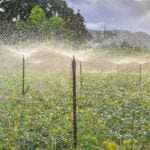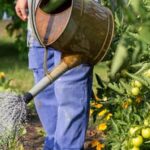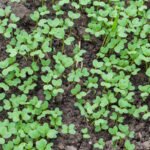As the weather turns cold and the outdoor garden beds become dormant, many gardening enthusiasts turn to indoor winter gardening vegetables to continue growing fresh produce all year round. Indoor winter gardening provides a wonderful opportunity to nurture and enjoy the fruits of your labor even during the colder months.
In this article, we will explore the benefits of growing vegetables indoors during winter, how to choose the right vegetables for indoor winter gardening, necessary supplies and equipment, setting up your indoor garden space, best practices for caring for your indoor winter garden, common challenges and how to overcome them, as well as harvesting and enjoying the delicious results of your efforts.
Growing vegetables indoors during winter not only allows you to continue enjoying fresh produce, but it also offers numerous benefits. From providing a fun and rewarding hobby to ensuring a supply of healthy, homegrown vegetables throughout the cold season, indoor gardening is both practical and enjoyable. With the right knowledge and preparation, you can successfully grow a variety of vegetables in an indoor setting.
When it comes to choosing the right vegetables for indoor winter gardening, some varieties are better suited for limited space and lower light conditions than others. Understanding which vegetables thrive indoors during winter will be key in creating a successful indoor garden. Whether you have limited space or ample room for multiple plants, there are options that can work for everyone interested in maintaining an indoor garden during winter.
Benefits of Growing Vegetables Indoors During Winter
One of the main benefits of growing vegetables indoors during winter is the ability to enjoy fresh, homegrown produce even when outdoor conditions are less than ideal. By taking advantage of indoor gardening techniques, such as using grow lights and creating a controlled environment, you can continue to harvest a variety of vegetables throughout the colder months. Additionally, indoor gardening allows you to have more control over factors like temperature and humidity, helping to ensure a successful harvest.
Another benefit of indoor winter gardening vegetables is the opportunity to prolong the growing season and experiment with different plant varieties. While traditional outdoor gardens may be limited by seasonal changes, indoor gardening provides the flexibility to grow a wider range of vegetables year-round. This can be especially rewarding for those who are passionate about sustainable living and reducing their carbon footprint by producing their own food at home.
Additionally, growing vegetables indoors during winter can also be a therapeutic and enjoyable hobby. Tending to your indoor garden can provide a sense of satisfaction and connection to nature, even when it’s too cold to venture outside. The process of nurturing plants from seedlings to mature vegetables can be incredibly rewarding, not to mention the culinary delights that come from harvesting your own fresh produce in the dead of winter.
- Increased access to fresh produce
- Extended growing season
- Indoor gardening as a therapeutic hobby
Choosing the Right Vegetables for Indoor Winter Gardening
When it comes to choosing the right vegetables for indoor winter gardening, there are several factors to consider. Not all vegetables thrive in indoor conditions, especially during the colder months. However, with the right selection, you can enjoy a bountiful harvest of fresh produce right from your own home.
Here are some vegetables that are well-suited for indoor winter gardening:
- Leafy greens such as lettuce, spinach, and kale
- Root vegetables like carrots, radishes, and beets
- Herbs such as parsley, cilantro, and chives
- Microgreens such as arugula, mustard greens, and broccoli sprouts
- Scallions and green onions
These vegetables are not only suitable for indoor growing conditions but also provide an abundance of nutrients and flavors to enhance your winter meals. By choosing the right vegetables for indoor winter gardening, you can create a mini garden oasis in your home even when it’s cold and snowy outside.
In addition to selecting the right types of vegetables for indoor winter gardening, it is important to consider their space requirements. Some vegetables may need larger pots or containers to grow properly indoors, while others can thrive in smaller spaces. Consider the layout of your indoor garden space and plan accordingly to ensure that each vegetable has enough room to grow. Remember that proper spacing will contribute to healthier plants and a more successful harvest of indoor winter gardening vegetables.
Necessary Supplies and Equipment for Indoor Winter Gardening
When it comes to indoor winter gardening vegetables, having the necessary supplies and equipment is crucial for success. While outdoor gardening may require different tools and resources, indoor gardening during the winter months has its own set of requirements.
One essential supply for indoor winter gardening vegetables is a suitable container or pot for each plant. Since these plants will be grown indoors, it’s important to choose containers that are appropriately sized for the specific vegetables being grown. Additionally, high-quality potting soil is necessary to provide the proper nutrients and support for healthy growth.
In addition to containers and soil, adequate lighting is vital for the success of indoor winter gardening vegetables. Since natural sunlight may be limited during the winter, investing in grow lights or full-spectrum LED lights can help ensure that your plants receive the light they need to thrive. Temperature control is also important, so having a reliable thermometer and possibly a small space heater can help maintain an optimal growing environment.
Another essential piece of equipment for indoor winter gardening vegetables is a watering system. Depending on the number of plants you have, this could range from a simple watering can to a more elaborate drip irrigation system. Consistent and appropriate watering is crucial for healthy vegetable growth indoors during the winter months.
By ensuring you have all of these necessary supplies and equipment in place, you can set yourself up for success when it comes to growing delicious and sustainable indoor winter gardening vegetables throughout the colder months.
Setting Up Your Indoor Winter Garden Space
Choosing the Right Location
When setting up your indoor winter garden space, it’s important to choose the right location within your home. Look for a spot that receives plenty of natural light, such as a south-facing window. If natural light is limited in your home, consider investing in artificial grow lights to provide the necessary light for your vegetables to thrive.
Container Selection and Layout
The next step in setting up your indoor winter garden space is to choose the right containers for your vegetables. Make sure the containers have drainage holes to prevent waterlogging and select containers that are the appropriate size for each type of vegetable you plan to grow. Additionally, consider the layout of your indoor garden space to maximize sunlight exposure and air circulation for optimal growth.
Creating the Ideal Growing Environment
In addition to choosing the right location and containers, creating the ideal growing environment for your indoor winter gardening vegetables is crucial. Maintain a consistent temperature between 60-70°F (15-21°C) and ensure proper humidity levels by misting your plants or using a humidifier if necessary. Monitor and control pests that may affect your vegetables, and be mindful of proper ventilation within your indoor garden space.
By following these tips for setting up your indoor winter garden space, you can create an environment where your vegetables can thrive throughout the winter months. With careful planning and attention to detail, you can enjoy a bountiful harvest of fresh and delicious produce right from your own home.
Best Practices for Caring for Indoor Winter Gardening Vegetables
When it comes to caring for your indoor winter gardening vegetables, there are a few best practices that can help ensure a successful and bountiful harvest. Taking the time to properly care for your plants will not only lead to healthier and more productive vegetables, but it can also be a rewarding and enjoyable experience.
Provide Adequate Light
One of the most important factors in caring for indoor winter gardening vegetables is providing them with adequate light. Since natural sunlight may be limited during the winter months, consider using grow lights to supplement the light your plants receive. Place the lights at the appropriate distance from your plants to ensure they are getting enough light without becoming damaged from too much heat.
Monitor Watering and Humidity
Proper watering is essential for the health of your indoor winter gardening vegetables. Be mindful not to overwater or underwater your plants, as both can lead to issues such as root rot or wilting. Additionally, since indoor environments tend to have lower humidity levels, consider using a humidifier or misting your plants occasionally to maintain an optimal growing environment.
Control Temperature and Air Circulation
Maintaining a consistent temperature and good air circulation is key in caring for your indoor winter gardening vegetables. Keep your plants away from drafts or heating vents that could cause temperature fluctuations. Consider using fans or opening windows periodically to promote air circulation and prevent stagnant air, which could lead to mold or mildew issues.
By following these best practices for caring for your indoor winter gardening vegetables, you can set yourself up for success in growing healthy and delicious produce year-round. With proper attention and care, you can enjoy a thriving indoor vegetable garden even during the coldest months of the year.
Common Challenges and How to Overcome Them
Growing vegetables indoors during the winter can be a rewarding and fulfilling hobby, but it does come with its unique set of challenges. One common challenge for indoor winter gardening vegetables is the lack of natural sunlight. This can be overcome by investing in grow lights that provide the necessary spectrum of light for plant growth.
Another challenge is maintaining the right temperature and humidity levels, especially in dry indoor environments. Using a humidifier and keeping an eye on the thermostat can help create a conducive growing environment for your vegetables.
Pest infestation is also a common problem when growing vegetables indoors. Since there are no natural predators to keep pests at bay, it’s important to regularly inspect your plants for any signs of infestation and take prompt action using organic pest control methods. Additionally, ensuring proper air circulation can help prevent pest problems.
Finally, one major challenge many indoor gardeners face is overwatering or underwatering their plants. It’s important to closely monitor the moisture levels in the soil and adjust watering frequency accordingly. Using a moisture meter can be helpful in determining when plants need water, preventing both overwatering and underwatering.
Overall, while there are challenges to growing vegetables indoors during the winter, with the right knowledge and preparation, these obstacles can be overcome to enjoy a successful indoor garden.
| Common Challenges | How to Overcome Them |
|---|---|
| Lack of Natural Sunlight | Invest in grow lights; ensure proper spectrum of light for plant growth |
| Maintaining Temperature and Humidity Levels | Use a humidifier; monitor thermostat; create conducive growing environment |
| Pest Infestation | Regularly inspect plants; use organic pest control methods; ensure proper air circulation |
Harvesting and Enjoying the Fruits of Your Indoor Winter Gardening Efforts
Once your indoor winter gardening vegetables have matured and are ready for harvest, it’s time to enjoy the fruits of your labor. There’s nothing quite like the satisfaction of picking fresh produce from your own indoor garden, especially during the winter months when store-bought options may be less appealing. Whether you’re harvesting crisp lettuce, ripe cherry tomatoes, or fragrant herbs, the rewards of indoor winter gardening are plentiful.
One of the greatest benefits of harvesting and enjoying your indoor winter gardening vegetables is the unparalleled freshness and flavor they offer. Unlike store-bought produce that may have been harvested days or even weeks ago, your homegrown vegetables are at their peak when you pick them.
The result is a taste sensation that simply can’t be matched by anything found in a grocery store. Additionally, knowing exactly where your food comes from and how it was grown can provide peace of mind and a sense of connection to your meals.
In addition to reaping the literal fruits (or vegetables) of your labor, indoor winter gardening also offers opportunities for creativity in the kitchen. Experimenting with new recipes or simply adding freshly harvested ingredients to your favorite dishes can elevate your culinary experience. From hearty salads to flavorful soups and stews, there are countless ways to incorporate your homegrown produce into delicious meals that will warm both body and soul during the chilly winter months.
Conclusion
In conclusion, indoor winter gardening vegetables are not only a sustainable and practical way to ensure a fresh supply of produce during the colder months, but also a delightful hobby that can bring joy and satisfaction to any gardener. The benefits of growing vegetables indoors during winter are numerous, from having access to fresh and nutritious produce all year round to enjoying the therapeutic effects of tending to plants in the comfort of your home.
Choosing the right vegetables for indoor winter gardening is crucial, as is having the necessary supplies and equipment to create a thriving garden space.
Setting up your indoor winter garden space may seem challenging at first, but with the proper guidance and best practices for caring for indoor winter gardening vegetables, you can overcome common obstacles and enjoy a bountiful harvest. By embracing indoor winter gardening, you can take control of your food supply, reduce your carbon footprint, and savor the rewarding experience of growing your own vegetables throughout the year.
Overall, indoor winter gardening can be a fulfilling endeavor that allows you to stay connected to nature even when outdoor conditions may not be suitable for traditional gardening. Whether you are an experienced gardener or just starting out with indoor gardening, embarking on this journey can lead to delicious rewards and contribute to a more sustainable lifestyle. So why not give it a try? Happy planting.
Frequently Asked Questions
What Vegetables Can Be Grown Indoors in Winter?
Some vegetables that can be grown indoors in winter include leafy greens like spinach, kale, and lettuce, as well as herbs like basil, cilantro, and parsley. These plants can thrive in containers near a sunny window or under grow lights.
Can You Grow an Indoor Garden in the Winter?
Yes, it is possible to grow an indoor garden in the winter. With the right conditions such as proper lighting, temperature, and soil, you can successfully cultivate a variety of vegetables and herbs indoors during the colder months.
What Can I Plant in My Winter Vegetable Garden?
In your winter vegetable garden, you can plant cold-hardy crops such as carrots, radishes, broccoli, cauliflower, Brussels sprouts, and cabbage. These vegetables are able to withstand lower temperatures and can be grown successfully even during the winter months when provided with adequate protection from extreme weather conditions.

If you’re looking to get into vegetable gardening, or are just looking for some tips on how to make your current garden better, then you’ve come to the right place! My name is Ethel and I have been gardening for years. In this blog, I’m going to share with you some of my best tips on how to create a successful vegetable garden.





